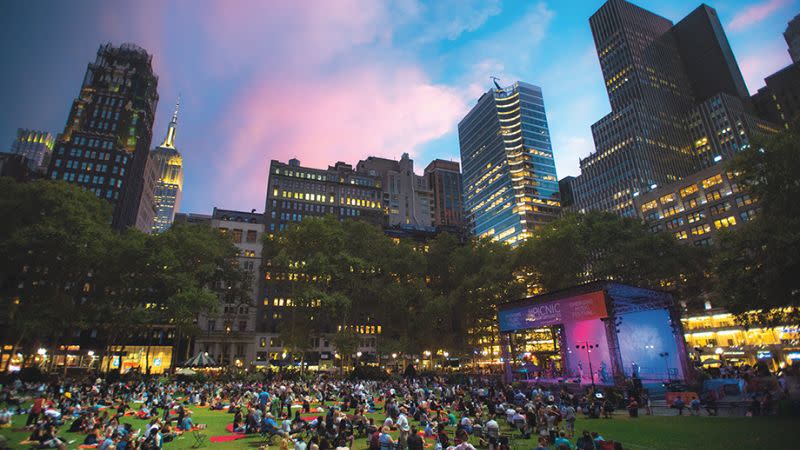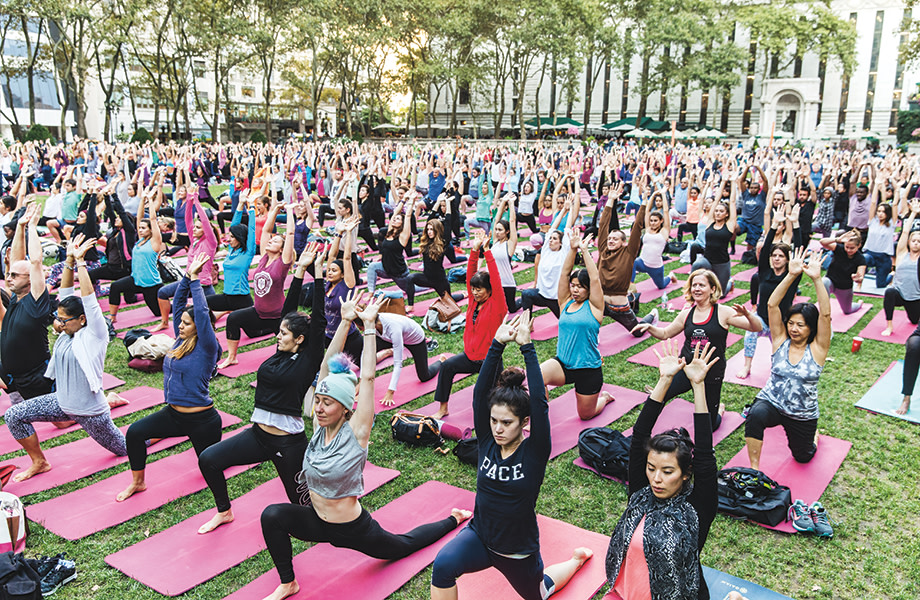From Danger Zone to New York Cultural Mecca

In this exclusive preview from The Place Economy Volume 3, launching next month, the founder and principal of Hoyne, Andrew Hoyne, speaks to urban revitalisation expert Dan Biederman, who is renowned for his innovative projects including the acclaimed Bryant Park in New York. Biederman is speaking at the Property Council of Australia’s Future Cities Summit this week.
Andrew Hoyne: Tell us a little about your background? How did you become Dan Biederman?
Dan Biederman: I had a business degree and my first job after graduate school was at a consulting firm, so I learned how to consult. But it was backroom kind of work, systems consulting. When the opportunity to fix Bryant Park came up, the Rockefellers were the client. It took me 90 days to write the plan to fix it. I was solo, no company backing.
At the time, Bryant Park was something of a killing ground; there were 500 felonies in the park in the year before I took it over. Those are the most serious crimes in the American Penal Code, from murder and rape to robbery and assault.
So I started with Bryant Park, and there were nine years of agony getting that plan adopted by the authorities in New York, even though we had a good Mayor called Ed Koch (who served from 1978 to 1989) behind us. His administration was very supportive.
So Bryant Park was a success, and then two other neighbourhoods came to me and asked if I could fix their problems. I ended up running three sections of Midtown Manhattan which represented about half the real estate in the district. I formed BRV, my private consulting firm, with the intention of taking my ideas outside New York.

Programming is the bedrock of your approach. In your opinion, what volume and frequency of activities are required to make a space successful?
We love working in places where the weather permits multiple activities every day. New York weather really is quite bad. If you talk to restaurant owners with outdoor seating, even pre-Covid, and ask them how many days their outdoor sections are productive, they’ll say around 100. In California it’s more like 200 or 250.
Still, we go into a space thinking we’ll try and have something going on 365 days a year. The way to do this is by not having too many activities based around things such as concerts. Instead, we have what we call ‘amenities’, covering anything from ping-pong tables to a putting green, a reading room, a carousel or a games area for things like chess or backgammon.
And then all the food and beverage. Amenities are on offer every single day, sometimes for up to 14 hours. Everything else we call a program, and even with the program I like to produce what I call a thick schedule. In the case of the piano in Bryant Park, for example, that’s on offer 100 times a year, five days a week in normal times.
Other things like juggling lessons could happen 200 times a year. Once you do these things often enough people actually figure it out and say, ‘Okay, the piano concert is on in Bryant Park today’, and they visit especially.

Do you alter programming to cater for different audiences or times of day?
A lot of thought and observation goes into timings and programming. When I was in Beijing in 2007 I noticed people were getting up ridiculously early to do tai chi in public spaces. In some places in China, which has no time zones, the sun comes up at 2.45am in June and they’re just in the habit of rising with it. Back home we guessed we’d have patrons for tai chi in Bryant Park and they would be Chinese nationals living in or visiting New York. We introduced tai chi at 6am and that’s who attended. It works.
While activities at Bryant Park don’t start at 2.45am, they do start at 6am. We need the kiosks open for office workers grabbing coffee at 7-7.30am. Then mid-morning you might have students on their way to the library, people between meetings using our Wi-Fi.
By lunchtime we’re back to office workers—tons of them—and tourists. Mid-afternoon we have more elderly people; they are a great audience from 2pm to 4pm so we have a singalong for them about 15 times a year. They also show up for our piano stuff, which goes past the lunch hour. So, you get a sense of how resourceful you have to be in thinking about the challenges.
The public spaces you’re associated with have a positive economic impact on surrounding businesses and properties. How does this model work? Do those surrounding businesses, benefitting from your work, contribute at all?
Let me start with real estate value. Bryant Park didn’t start as a real estate owner’s seed money project; the money came from the Rockefellers and some corporations, not the owners of the buildings. When we were finished, however, there was a famous moment when I walked into a room with a guy from a family business that owned the Grace Building—which is 1.3 million square feet (396,000sq m) right above Bryant Park—and, on the back of an envelope, he showed me how much money we had made for him.
Bryant Park went from an horrendous killing ground to a great space, and this man said, ‘We had a lot of vacant space when you started. Now, not only do we not have vacant space, but when somebody calls, we’re arrogant about not needing them’. He also told me one of the Big Four accounting firms wanted space in the Grace Building and he had to tell them there’d be nothing available for a decade or so.
The Grace Building’s owner contributed $US1 million over the years to be part of our business improvement district. The success of Bryant Park enabled them to substantially increase rent and, in their words, ‘achieve $US390 million in value uplift’.
Then there are all kinds of other little sub-effects, such as the young employees who have typically given Midtown Manhattan the cold shoulder because it’s not as cool as Chelsea, Brooklyn, Tribeca, or other neighbourhoods. That’s no longer so true because Bryant Park is regarded as cool.
There is ongoing reinvigorated demand for office space within five blocks of the park, as evidenced by real estate ads that always mention being ‘just steps from Bryant Park’, or they show pictures of Bryant Park rather than the building they’re marketing. It’s flattering for us. The city benefits because New York has exorbitant real estate taxes. An appraiser recently calculated that New York City receives around US$33 million extra a year as the result of something it spent virtually nothing on. Bryant Park was privately funded.
This is a summarised extract from The Place Economy by Hoyne, a series of resource books which look at best practice placemaking around the world. Volume 3 is due to launch in June 2023. Find out more about the series here: https://hoyne.com.au/the-place-economy/
The Urban Developer is proud to partner with Hoyne to deliver this article to you. In doing so, we can continue to publish our daily news, information, insights and opinion to you, our valued readers.















